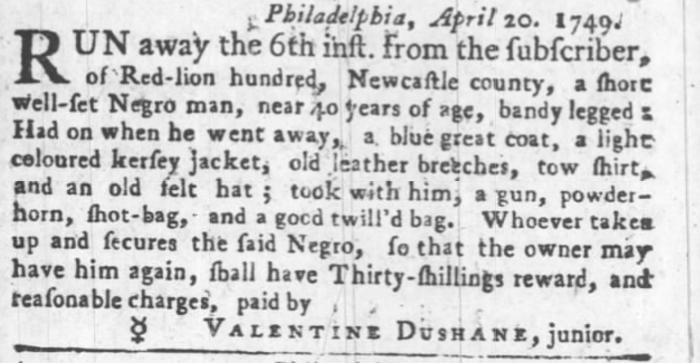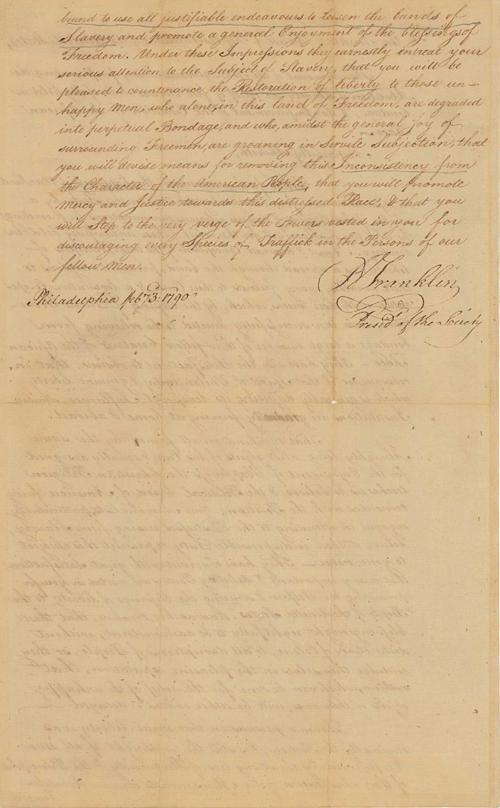Joshua Knoll, the neighborhood located at the intersection of Flourtown and Joshua Roads, includes several streets named after historic American writers. This housing development is situated in the Lafayette Hill section of Whitemarsh Township.
The photograph above shows Joshua Road going from the center of the bottom of the photo to near the top of the right side of the image. Flourtown Road goes from the very top of the left side to the center of the right side in this photograph. Joshua Knoll is located below Flourtown Road and to the left of Joshua Road in this photo. Whitemarsh Elementary School is located in the lower right-side of this image.

Joshua Road is a major road that travels much of the length of Whitemarsh Township in the Freedom Valley. The name of the roadway began as “the Joshua Road” in recognition of Mr. Joshua Paxton. This, according to Bean’s History of Montgomery County. Mr. Paxton, according to the book, had owned property along this roadway; he had been a Friend (a Quaker) and a member of the Plymouth Meeting, located at the intersection of what is known today as Butler and Germantown Pikes.

Franklin Way takes its name from Mr. Benjamin Franklin, writer, publisher, diplomat, scientist, and patriot. Mr. Franklin was one of the founding fathers of the United States of America. He served the new country as Ambassador to France.
A few of the sayings attributed to Mr. Franklin in Poor Richard’s Almanack:
Three may keep a secret, if two of them are dead
Early to bed and early to rise, makes a man healthy, wealthy, and wise
God helps them that help themselves
Don’t throw stones at your neighbors, if your own windows are glass
Well done is better than better said
To err is human, to repent divine, to persist devilish
We may give advice, but we cannot give conduct
The proud hate pride – in others
Haste makes waste
Half the truth is often a great lie
Eat to live, not live to eat
In addition to creating these sayings that many of us have read or heard through the years, Mr. Franklin was also “a man of his times.”
Translation: He owned human beings as property.
Translation: He made money off of the slave trade by selling advertisements in his publication, the Pennsylvania Gazette. Some of those ads were for the sale of human beings or for rewards being offered for the return of human beings who fled bondage.

In this advertisement from April 20, 1749, was published in the Pennsylvania Gazette – owned by Mr. Benjamin Franklin – offering a reward for the return of a human being. A human being that decided he did not want to be owned as property in what is today known as New Castle County, Delaware. Please note that in the English language of the time, the “f” was used in many words instead of an “s”.

On August 1, 1765, Mr. Benjamin Franklin received money for this advertisement in his publication, the Pennsylvania Gazette. The ad offers for sale human beings from the west coast of Africa. In addition, the advertisement notes that three indentured servants are to be “disposed of”.

Six days after the public proclamation of the Declaration of Independence – on July 10, 1776 – these two advertisements appeared in the Pennsylvania Gazette in Philadelphia. One ad is explaining that a man is available for sale because his current master has no work for him, while the second ad details the reward offered for a human being that fled bondage in Maryland. Note that the first ad asks readers to “enquire of the PRINTERS” regarding the human being available for sale. Mr. Franklin was the printer; whether he was the seller or simply the conduit to the seller is unknown.
At some point in his life, Mr. Franklin changed.
He recognized that the concept and the reality of owning other human beings – though legal and acceptable to many in power – was not a moral choice.
According to the Library of Congress, Mr. Franklin appealed for public support to not only end slavery and the slave trade, but to educate the former slaves and their children.
According to the National Archives, Mr. Franklin became President of the Pennsylvania Society for Promoting the Abolition of Slavery in 1787. His last public act, according to the Federal Government, was to send Congress a petition dated February 3, 1790, asking for an end to slavery and an end to the slave trade.
In 1790, the United States Congress declined to abolish slavery, end the slave trade, and provide freedom to the human beings owned by others.
It would be 18 more years – in 1808 – before a Congressional act made the importation into the United States of human beings as slaves was officially a criminal act.
It would be 75 more years – in 1865 – before much of official human bondage ended in the United States.
It would be 164 more years – in 1954 – before the United States Supreme Court officially ruled that separate, but equal public education was unconstitutional.
It would be 175 more years – in 1965 – before the United States Congress voted to officially remove barriers to voting by American citizens – barriers that had evolved through the years to keep certain human beings “in their place.”

Front of petition signed by Mr. Benjamin Franklin asking the United States Congress to end slavery and the slave trade.

Back of petition signed by Mr. Franklin asking the United States Congress to end slavery and the slave trade.

Stevenson Circle was named after Robert Louis Stevenson, a noted novelist and poet. Born in Scotland in 1850, Mr. Stevenson died as a young man aged 44 years in 1894.
Among his works is Strange Case of Dr. Jekyll and Mr. Hyde as well as Treasure Island.
On December 28, 1878, The Times of London carried an advertisement highlighting Edinburgh: Picturesque Notes, a book written by Mr. Stevenson. The ad describing the book quoted the Pall Mall Gazette: “A brightly written account of Edinburgh. A very charming gift book.”
The Detroit Free Press on July 19, 1879, called Travels With A Donkey In The Cevennes, a book written by Mr. Stevenson, as “one of the most delightful books of the season.”
On January 16, 1886, The Chicago Tribune advertised the authorized edition of the Strange Case of Dr. Jekyll and Mr. Hyde was available for sale for $1.00.

Mr. Stevenson traveled the world in his short life. Within the United States, he visited New York and California, among other locales. In his latter years, he settled in Samoa. According to the Edinburgh Napier University, Mr. Stevenson is buried at the top of Mount Vaea in Samoa.

The origin of the name for Dana Lane is not certain, though it is likely to be named after Richard Henry Dana. There are two prospects with that name, though – a father and a son.
Richard Henry Dana, Jr. was both a writer and an attorney. Mr. Dana was born in Cambridge, Massachusetts, in 1815; he died in 1882.
The Daily News of Newport, Rhode Island, reported that To Cuba And Back, a book by Mr. Dana, was available for sale on May 31, 1859; the book was described as a vacation voyage.
President Abraham Lincoln appointed Mr. Dana to be the United States Attorney for Massachusetts in 1860. On March 7, 1876, The Philadelphia Inquirer reported that President Ulysses S. Grant nominated Mr. Dana as the Ambassador to the United Kingdom; his nomination was defeated in the United States Senate.
The death of Mr. Dana in Rome, Italy, was noted throughout the United States. The New York Times, for example, on January 8, 1882, printed a news article on his passing. The newspaper highlighted books written by Mr. Dana, including Seaman’s Manual and Two Years Before The Mast.
Years after his death, his legacy continued to be remembered.
The Sunday News-Dealer of Wilkes-Barre explained how Mr. Dana fought for the freedom of runaway slaves, including during a prominent case in Boston involving Anthony Burns. Mr. Burns was a human being held as a slave; he had fled bondage. Federal law at the time demanded that this human being be returned to his owner. The newspaper reported on June 2, 1895, how Mr. Dana “exhausted every legal expedient to win the negro’s freedom.” Mr. Dana did not succeed. Mr. Burns was convicted of being a fugitive slave and returned to Virginia as a slave.
The Brooklyn Daily Eagle reported on the anniversary of Mr. Dana’s birthday, on August 1, 1929, that he was one of the founders of the Free Soil Party in 1848. This political party had been created to oppose the spread of slavery into the territories of the United States. The newspaper also noted that Mr. Dana was also a public speaker and advocate for the Republican Party in its early days.

Mr. Dana’s father – Richard Henry Dana, Sr. – was also a writer and an attorney. His poetic writings included The Buccaneer and Paul Felton.
Born in 1787, he died in 1879. Like his son, Mr. Dana also graduated from what we know today as Harvard University. He was among the early contributors to the North American Review.
The Yazoo Valley Democrat included Mr. Dana in a news article detailing how good health was a key aspect of success. A number of prominent Americans were used as examples in this news article that was printed on May 2, 1876.
An interesting news article was printed a couple months after the death of Mr. Dana, Sr. The article provided an example of ways that individuals from the North and South had attempted to heal the wounds of the American Civil War. The Daily Review in Wilmington, North Carolina, reported on April 25, 1879, that Mr. Dana extended a great courtesy to a Southern colonel after the end of the war. The newspaper explained that Colonel Allston of Georgia had written a letter to The Boston Herald to defend his view that Southerners were honest people. Mr. Dana sent Col. Allston a check for $1,000.00 to help him, but The Daily Review reported that Col. Allston returned the check. The newspaper explained that Col. Allston thanked Mr. Dana for the offer of assistance, noting that it would definitely have helped him since he owed others a total of $8,240.00, but that he could not keep the $1,000.00. Mr. Dana then sent Col. Allston a check for $8,240.00, which Col. Allston did keep as a loan. Col. Allston returned the full amount, according to the newspaper, to Mr. Dana two years after receipt of the funds.
The top two photos are courtesy of Google, 2018.
The painting of Benjamin Franklin is courtesy of the Library of Congress from an engraving from 1868 of the original painting by J. A. Duplessis in 1783.
The advertisements are copies of ads that appeared in the Pennsylvania Gazette, 1749, 1765, and 1776.
The images of the petition signed by Benjamin Franklin are courtesy of the National Archives from a document from the United States Senate, 1790.
The photograph of Robert Louis Stevenson is from 1887.
The photograph of the gravesite of Robert Louis Stevenson is by Bartlett Tripp and was printed in My Trip To Samoa, 1911.
The portrait of Richard Henry Dana, Jr. is by Asa B. Eaton, circa 1868. The image is courtesy of the National Portrait Gallery of the Smithsonian Institution.
The image of Richard Henry Dana, Sr. is by Rufus Wilmot Griswold and was printed in The Poets and Poetry of America, 1855.
Do you have questions about local history? A street name? A building?
Your questions may be used in a future news article.
Contact Richard McDonough at freedomvalleychronicles@gmail.com.
© 2018 Richard McDonough

